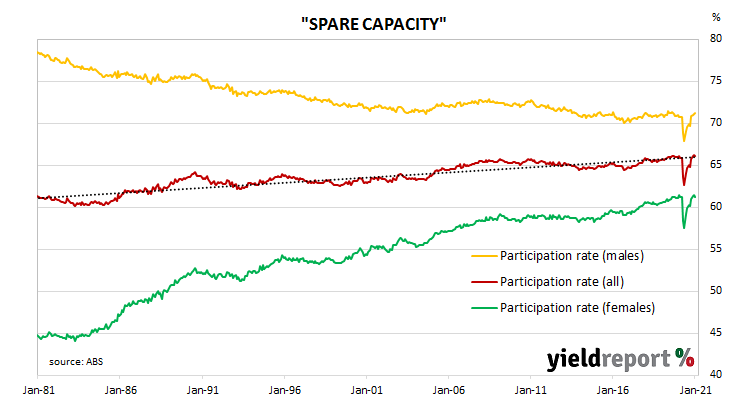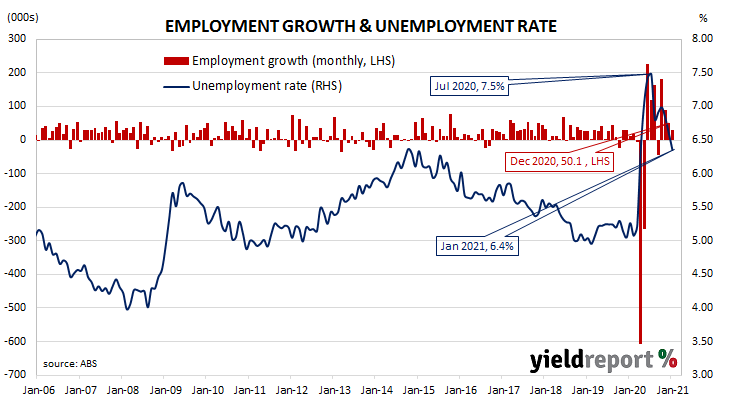Summary: Employment grows in January; employment number rises in line with expected figure; momentum “looking good”; participation rate slips back from peak; fewer people seeking work with slightly lower workforce sends jobless rate down; fewer part-time jobs, more full-time jobs; work hours fall markedly; underemployment rate down; more-confident employers may be rebalancing towards full-time workers.
Australia’s period of falling unemployment came to an end in early 2019 when the jobless rate hit a low of 4.9%. It then averaged around 5.2% through to March 2020, bouncing around in a range from 5.1% to 5.3%. Leading indicators such as ANZ’s Job Ads survey and NAB’s capacity utilisation estimate suggested the unemployment rate would rise in the June 2020 quarter and it did so, sharply. The jobless rate peaked in July before falling below 7% in August. Since then, it has continued to trend lower.
The latest Labour force figures have now been released and they indicate the number of people employed in Australia according to ABS definitions increased by 29,100 in January. The rise was less than December’s 50,100 increase but largely in line with the consensus figure.
“The current momentum is looking good for our assumption that it will provide an offset to the ending of the JobKeeper package in March,” said Westpac senior economist Justin Smirk.
Domestic Treasury bond yields changed very little, ignoring lower US Treasury bond yields. By the end of the day, the 3-year ACGB yield had crept up 1bp to 0.12%, the 10-year yield remained unchanged at 1.41% while the 20-year yield finished 1bp lower at 2.10%.
In the cash futures market, expectations of a change in the actual cash rate, currently at 0.03%, remained stable. At the end of the day, contract prices implied the cash rate would inch up slowly to around 0.08% by mid-2022.
The participation rate fell back from December’s 66.2% to 66.1% as the total available workforce shrank by 5,200 to 13,817,500. The number of unemployed persons declined by 34,300 to 877,600; the lower unemployment number more than offset the decrease in the number of people in the workforce and led to a fall in the unemployment rate from 6.6% to 6.4%.


